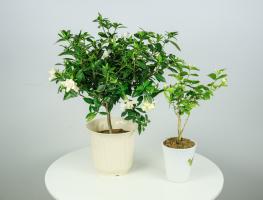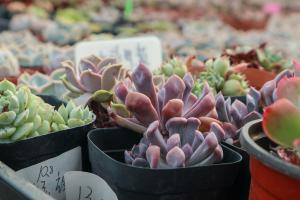How to Take Care of Potatoes Planted in Pots
Growing potatoes in pots is an easy and convenient way to enjoy this versatile vegetable, even if you don't have access to a garden. However, caring for your potted potatoes requires some knowledge and attention to ensure successful growth and a bountiful harvest. Here are some tips on how to take care of potatoes planted in pots.
Choosing the Container
The first step to growing potatoes in pots is to choose the right container. It should be at least 15-20 inches deep and wide, with drainage holes at the bottom to prevent water from pooling. A fabric pot or a grow bag made of breathable material is a good option, as it allows air to circulate around the roots, preventing rot and diseases. Fill the container with a rich, well-draining potting mix that is high in organic matter and nutrients.
Planting and Watering
After choosing the container, it's time to plant the potatoes. Start by cutting the seed potatoes into pieces, each with at least one eye or sprout. Let the cut pieces dry for a day or two before planting to prevent rot. Place the seed potatoes in the potting mix, with the sprouts facing upwards and covered with a few inches of soil. Water the soil thoroughly to ensure it's evenly moist, but not waterlogged, as excess water can lead to root rot.
Feeding and Fertilizing
As the potato plants grow, they require frequent feeding to support their growth and produce a good harvest. Use a balanced, water-soluble fertilizer that is high in nitrogen, phosphorus, and potassium, and follow the instructions on the label. Apply the fertilizer every two weeks, starting from when the plants emerge, and water thoroughly afterwards to distribute the nutrients evenly. You can also add organic matter such as compost, aged manure, or worm castings to the soil periodically to improve its fertility and structure.
Sunlight and Temperature
Potatoes grow best in full sun, which means they need at least six hours of direct sunlight per day. Position the container in a sunny spot in your garden or on your balcony, and make sure the plants are not shaded by other objects. Potatoes also prefer cool temperatures, between 60-70°F during the day and 50-60°F at night. If the temperature exceeds 80°F, the plants can suffer heat stress and may stop growing or even die.
Pest and Disease Control
Like any other plants, potatoes are susceptible to pests and diseases that can damage or kill them. Some common pests include potato beetles, aphids, slugs, and wireworms, while diseases such as blight, scab, and wilt can affect the foliage, tubers, or both. To prevent and control these problems, maintain good hygiene in your garden and remove any debris, weeds, or diseased plants. You can also use organic pest control methods such as handpicking, insecticidal soap, or neem oil, or purchase natural predators such as ladybugs or nematodes to control the pests. Finally, practice crop rotation and avoid planting potatoes in the same spot for more than two years in a row, as this can increase the risk of soilborne diseases.
Harvesting and Storing
Potatoes are ready to harvest when the foliage turns yellow and dies back, usually 80-100 days after planting. Carefully dig up the soil and extract the potatoes, being careful not to damage them. Let the potatoes dry in the sun for a day or two to harden their skins, then store them in a cool, dark place such as a basement or a pantry. Avoid exposing them to light or moisture, as this can cause them to sprout, rot, or develop a bitter taste.
By following these tips, you can grow healthy and delicious potatoes in pots and enjoy their rich flavor and nutrition in various dishes. Whether you're a beginner or an experienced gardener, cultivating potted potatoes can be a rewarding and satisfying experience that connects you to nature and promotes sustainability and self-sufficiency.

 how many times do yo...
how many times do yo... how many planted tre...
how many planted tre... how many pine trees ...
how many pine trees ... how many pecan trees...
how many pecan trees... how many plants comp...
how many plants comp... how many plants can ...
how many plants can ... how many plants and ...
how many plants and ... how many pepper plan...
how many pepper plan...






























